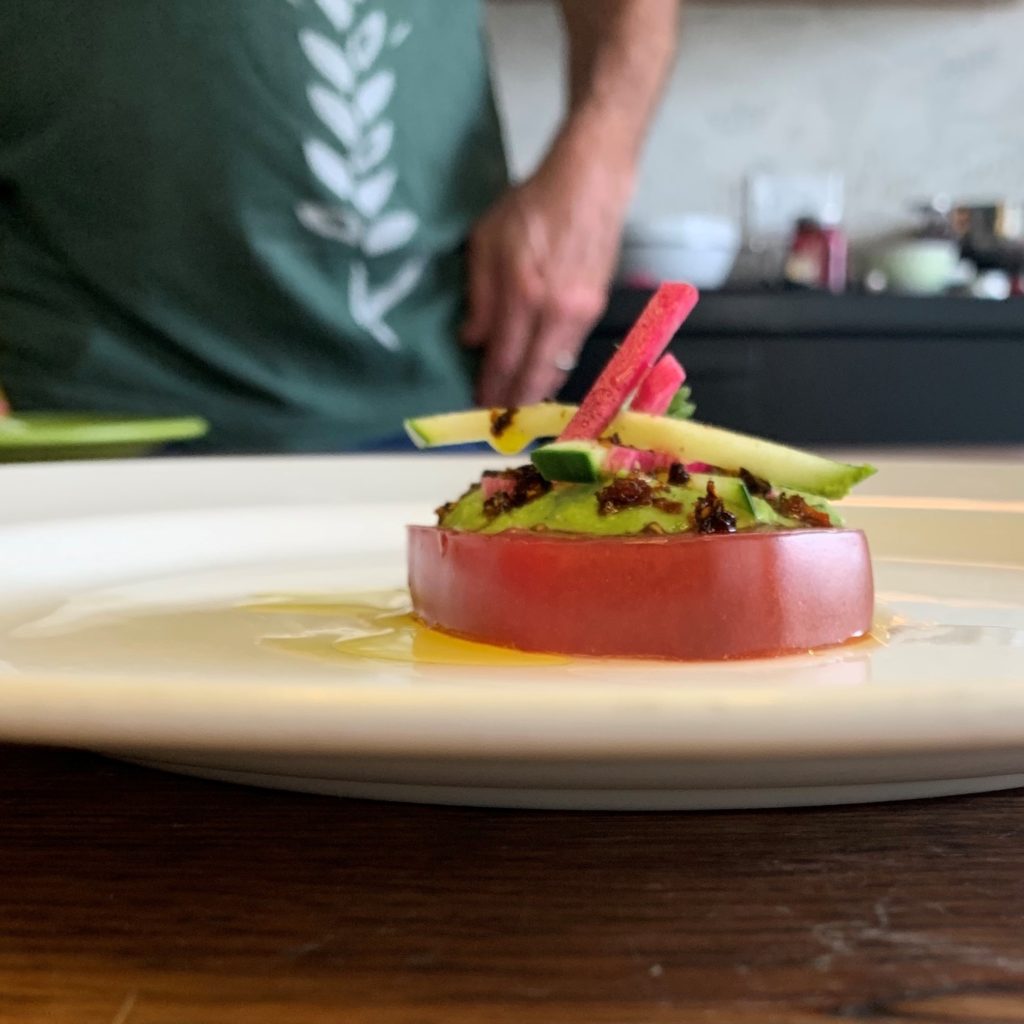Radish Green Pesto
Food waste in America is a growing problem that you can help address by using the whole plant. Maybe after a trip to the Farmers Market you are thinking about a simple salad with fresh radishes. This is where the waste starts. Most people chop off the radish tops and toss them in the compost.
What else can you do with radish greens? A lot actually.
You could simply sauté the greens with garlic. You can use radish greens in a hummus, add some greens to dal, or liven up a carrot ginger soup. One of my favorite ways to use this portion of the plant is to make a radish green pesto.
Make a pesto sauce
Refer to any Pesto or even a Pistou recipe as your guide to proportions. Traditionally pesto is made with basil, garlic, Parmesan, pine nuts (Pignolias), olive oil, and salt. As I have substituted the leafy green, I also considered a different nut to complement the radish greens.
Almonds, pistachios or macadamia nuts are all good alternates. I chose the mellow flavor and composition of macadamia nuts to make the dish creamy when blended. According to nuts.com, macadamia nuts “contain palmitoleic acid, a monounsaturated fatty acid that can improve fat metabolism.” So, there is also health benefits to this substitution too.


Prep your ingredients
Soak the fresh leaves in a bowl to let any dirt or sand sink to the bottom. Dry the leaves on a kitchen towel while you toast the macadamia nuts.
I prefer to use a dry cast iron pan to roast nuts over medium to low heat, shaking the pan often to toast evenly. This allows me to keep an eye on them. You can also toast nuts in the oven but set a timer, so you don’t burn them.
Taste as you make
As radish greens can be more bitter than other greens, you want to taste your pesto and adjust proportions as you are making it. Use the radish green pesto as you would a traditional pesto.
Radish green pesto also pairs well with acid sources such as lemons, vinegar or tomatoes. I chose to top an heirloom tomato with radish green pesto, cucumber and watermelon radish match sticks. I sprinkled on some of my dried salsa flakes, coarse salt, fresh ground pepper, and extra virgin olive oil.
If you want to learn more about using the whole plant, I suggest picking up “Root to Leaf: A Southern Chef Cooks Through the Seasons” by chef Steven Satterfield of Atlanta’s Miller Union.
I would love to hear how you are using the complete plant and what you made.
